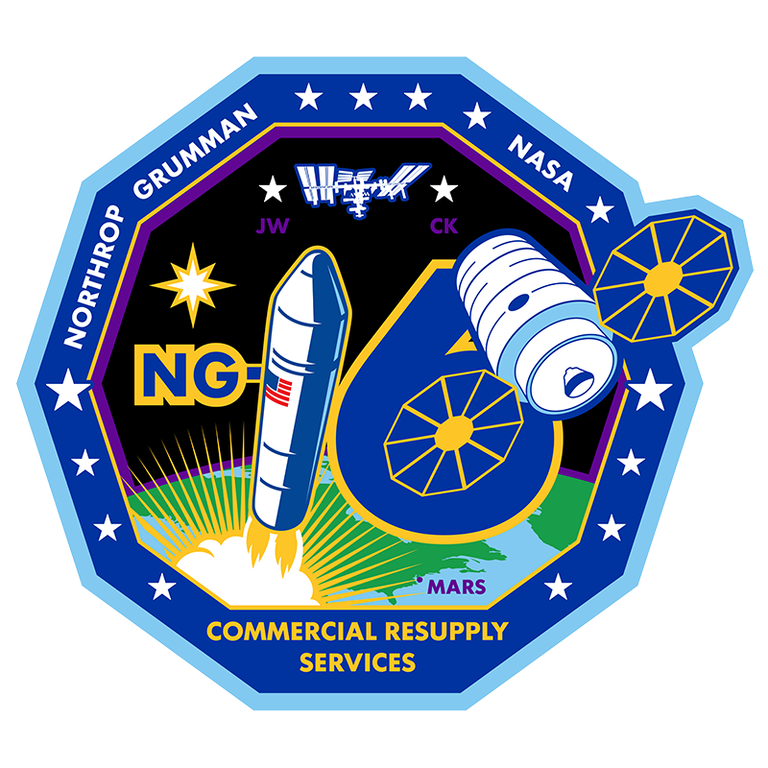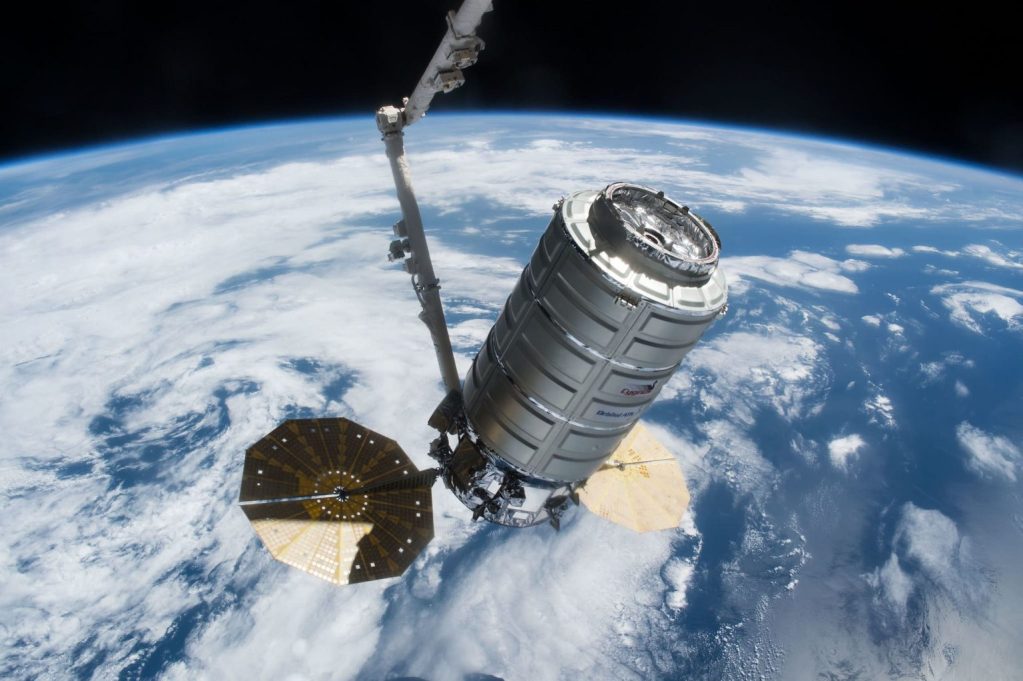Featured image: NASA’s Wallops Flight Facility/Jamie Adkins
Lift Off Time | August 10, 2021 – 22:01 UTC | 18:01 EDT |
|---|---|
Mission Name | NG-16, an orbital resupply mission to the International Space Station (ISS) |
Launch Provider | Northrop Grumman Innovation Systems |
Customer | NASA |
Rocket | Antares 230+ |
Launch Location | Launch Pad 0A, Wallops Island, Virginia, USA |
Payload mass | ~3,700 kg (8,200 lb) |
Where did the spacecraft go? | Low Earth Orbit (LEO) (Initially about 400 km) Rendezvousing with the International Space Station (ISS) |
Did they attempting to recover the first stage? | No, this is not a capability of Northrop Grumman |
Where did the first stage land? | It crashed into the ocean off the coast of Virginia, USA |
Did they attempting to recover the fairings? | No, this is not a capability of Northrop Grumman |
Were these fairings new? | Yes |
This was be the: | – 5th uncrewed mission to the ISS of 2021 – 15th Antares mission – 10th launch of an Antares 230 series rocket – 76th orbital launch attempt of 2021 – 79th cargo delivery to the ISS |
Where to watch | NASA replay |
How did it go?
Northrop Grumman successfully launched NG-16, its 16th commercial resupply mission for NASA to the International Space Station (ISS). A Cygnus spacecraft, the S.S. Ellison Onizuka, launched atop an Antares 230+ rocket, delivering ~3,700 kg (8,200 lb) of crew supplies, science and research, and hardware to the ISS and its crew. The rocket underwent a last minute computer reboot issue at T-6 minutes, delaying launch by 5 minutes.
After liftoff it took the spacecraft two days to reach the station. Upon arrival NASA astronaut Megan McArthur, backed up by ESA astronaut Thomas Pesquet, captured the spacecraft using the Canadarm2. Flight controllers in Houston then commanded the installation of the spacecraft to the Unity module, where it will stay for the next three months.

Payloads on NG-16
NG-16 is Northrup Grumman’s 16th cargo resupply mission to the ISS as a part of the Commercial Resupply Services (CRS). These missions have been essential for transporting crew supplies, like food and clothing, but also new science research experiments to the station since 2014. On board this Cygnus spacecraft was 1,396 kg (3,078 lb) of crew supplies, 1,064 kg (2,346 lb) of science investigations, 15 kg (33 lb) of spacewalking equipment, 1,037 kg (2,286 lb) of vehicle hardware, and 44 kg (98 lb) of computer resources. The following is a selection of the many research experiments being flown to the ISS on NG-16.

The Redwire Regolith Print
When humans return to the Moon, and eventually reach Mars, being able to utilize the resources already available there to build structures will greatly reduce how much material needs to be sent from Earth. The Redwire Regolith Print (RRP) study will demonstrate 3D printing on the ISS using a material that simulates regolith – the loose rock and soil which is found on the surfaces of planetary bodies. This study will explore whether regolith could be used as a raw material in 3D printing in order to build structures during future space missions.

KREPE
The KREPE study will demonstrate an affordable thermal protection system (TPS) which is planned to be used to protect spacecraft and their cargo during atmospheric re-entry. Developing TPS on Earth is difficult as it is hard to replicate the unique conditions of re-entry through the Earth’s atmosphere, meaning TPS designers often rely on numerical models rather than flight validation. KREPE will provide real flight data, making it easier to validate new TPS designs.
Four Bed CO2 Scrubber
The Four Bed CO2 Scrubber will demonstrate technology which removes excess carbon dioxide from a spacecraft. The investigation is based on current systems of CO2 scrubbing used aboard the ISS, but it will include mechanical upgrades and a longer-lasting absorbent which will reduce erosion and stop dust from gathering. The Four Bed CO2 Scrubber will help to improve the health of future crews, as well as benefiting closed environments on Earth which require the removal of CO2 to keep humans safe.
The Prototype Infrared Payload (PIRPL)
Developed by Northrop Grumman and Space Development Agency (SDA), PIRPL will collect infrared data to aid in the development of algorithms for new tracking satellites.
Blob
Blob is an ESA investigation which will allow students aged 10 to 18 to study a naturally occurring mold, Blob (Physarum polycephalum). Blob is only a single cell, but it is capable of very basic forms of learning and adaptation, like being able to move, feed itself and transfer knowledge to other slime molds. ESA astronaut Thomas Pesquet will perform experiments to see how the Blob’s behavior is affected by being in microgravity. Students on the ground will then be able to use the data collected and watch time lapse videos taken on station to compare the slime molds on Earth and in space.

NG-16, S.S. Ellison Onizuka
Each Northrop Grumman Cygnus spacecraft is named after an individual who played a pivotal role in human spaceflight. The previous Cygnus spacecraft, NG-15, was named after Katherine Johnson, the mathematician whose work in orbital mechanics at NASA was crucial to the success of the first U.S crewed spaceflights.
NG-16 is named after NASA astronaut Ellison Onizuka, the first Asian American to fly to space. Onizuka was selected for the NASA astronaut training program in 1978. He first flew as a mission specialist aboard the space shuttle Discovery for the STS-51-C mission, where he was responsible for primary payload activities. The STS-51-C crew completed 48 orbits of the Earth, logging 74 hours in space.
Onizuka later flew on the STS 51-L mission, but he and the six other crew members tragically lost their lives when the Space Shuttle Challenger exploded 73 seconds after launch. Onizuka paid the ultimate sacrifice, but has left an important legacy that continues to inspire people around the world.

The Antares 230+
The Antares 230+ is a two stage expendable rocket designed by Northrop Grumman to launch the Cygnus spacecraft to the ISS. Capable of carrying up to 8,000 kg (~17,600 lb) into Low Earth Orbit (LEO), it is the largest rocket operated by the company.
Antares has launched 14 times since its inaugural flight on April 21, 2013, and has suffered one major failure. During its fifth launch on October 28, 2014, both the vehicle and the payload were destroyed, with the first stage engines later deemed to be the cause of the failure. The rocket’s AJ26 engines were then changed to Russian RD-181 engines for future flights.

First stage
The first stage uses two Russian RD-181 engines, providing 3,844 kN (~864,000 lbf) of the thrust. The stage runs on Rocket Propellant 1 (RP-1) and liquid oxygen (LOX). It has a specific impulse (ISP) of 311.9 s at sea level and 339.2 s in vacuum. The stage burns for 215 seconds before being jettisoned and crashing into the ocean.
Second stage
The second stage uses a Castor-30XL solid rocket motor, fueled by hydroxyl-terminated polybutadiene (HTPB) and aluminum. The stage provides 474 kN (~107,000 lbf) of thrust, and runs for 156 seconds.
Launch Profile
| Hrs:Min:Sec From Lift-Off | Event | Altitude km (mi.) |
| 00:00:00 | Stage one ignition | 0 (0) |
| 00:00:03 | Lift off | 0 (0) |
| 00:03:18 | Main engine cut-off (MECO) | 83.9 (52.1) |
| 00:03:24 | Stage one separation | 88.9 (55.2) |
| 00:03:54 | Fairing separation | 111 (68.9) |
| 00:03:59 | Interstage separation | 114 (70.8) |
| 00:04:07 | Stage two ignition | 118 (73.3) |
| 00:06:52 | Stage two burnout/orbital insertion | 178.3 (110.8) |
| 00:08:52 | Payload seperation | 178.1 (110.6) |




